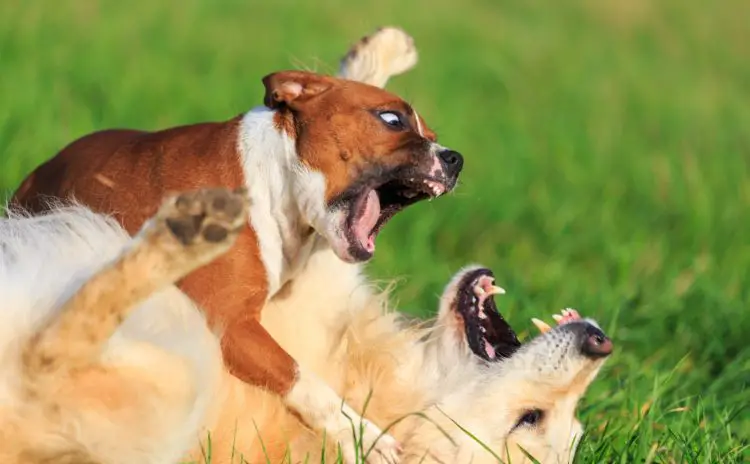When we think of having a pet, the first animal that probably comes to mind is a dog. After all, aren’t dogs everyone’s best friend? It’s true that they are very faithful companions. The domestication of dogs has a long history, maybe even as long as the history of human civilization. Records show that humans and dogs have been companions in many different civilizations through time and around the world. Scholars say that dogs were domesticated around 15,000 years ago. Several new pieces of evidence suggest that they were first domesticated in East Asia, possibly in China. Over time, hundreds of breeds with a great degree of variation have emerged.

Like humans, dogs are social animals, and this similarity in behavior accounts for their playfulness, trainability, and ability to fit into human surroundings and social situations. Moreover, the loyalty and devotion that dogs show for their owners, which is instinctual to them, is one reason why most dog owners view their pet as a full-fledged family member.
Canis familiaris
The scientific name of the domesticated dog is “Canis familiaris,” from the dog family “Canidae.” Dogs differ in appearance, function, size, and temperament. Small dogs can weigh as little as 1-and-a-half pounds, while other dogs can weigh as much as 200 pounds. There are approximately 138 officially recognized dog breeds, which are then categorized into seven different groups.
Historians posit that dogs have lived among humans as hunting companions, protectors, and friends for more than 12,000 years. Dogs are the most popular pets in the world and have been referred to as “man’s best friend.”
Dog Fighting
Your dog might get into fights with another dog because it’s part of their nature. Injuries from dog fights are a common cause of veterinary visits. They can range from minor to major as well as life-threatening. If your dog has been involved in a fight, always take them to the vet, even if the injuries are minor. What at first might look like a simple puncture wound could cause deep damage and lead to tissue damage under the skin.
Why Do Dogs Fight?
Dogs fight for various reasons. Even dogs that have lived together for years or are related to each other can and will fight. But some triggers are easy to identify and can be avoided.
When multiple dogs of the same sex live together in the same house, then there may be a higher risk of fighting. This is due to the constant desire to maintain a hierarchy. In wild dogs, there is a separate hierarchy structure for males and females, so a male and a female together in the same house are more likely to promote harmony as they are both maintaining their own separate “top dog” statuses. Interestingly, dogs that are related or who live together may fight when a younger pup reaches adolescence. Furthermore, the risk of fights is increased in dogs who are not spayed or neutered.
Food and toys are common triggers that provoke fighting. Many dogs are aggressive about their possessions, like chew bones, food, and toys. Feeding two dogs next to each other is not ideal because, when one dog finishes their food, they might decide to eat the other’s food or may even attempt to protect the bowl of food without even eating. It is better to feed multiple dogs on opposite sides of the room or even in different rooms or places, especially if your dog is possessive about food. It can also be beneficial to immediately pick up your dogs’ food bowls and wash and store them out of sight until the next meal.
Bones and chew toys are other highly desirable items for dogs. Most dogs are extremely possessive of bones and toys and like to hide them. It can sometimes be dangerous to try and take bones from dogs who are possessive. If you own a dog that shows possessive – bordering on dangerous – behavior, then you should remove all bones and chew toys from the home. If you ever need to remove a bone or toy from a dog, do not use your hand; try to distract the dog with another toy or throw a treat in the other direction.
How To Stop Dogs From Fighting
The best approach is prevention. Try to learn how to read your dog’s body language so you can understand any signs of stress. Whenever you see your dog approaching the edge of their comfort zone, try to intervene and remove them from the situation. It is better to try and predict a fight before it occurs rather than waiting until it’s too late and have to deal with the damage.
Never use your body to stop a dog fight. You can be easily bitten if you try to pull two dogs apart or separate them with your body. Never kick at a dog either. It is understandable that you would want to try and stop a fight by doing whatever it takes, but physically intervening in a dog fight puts you at risk of getting bitten. A dog bite can result in a severe wound, not to mention the costs associated with treating a bite wound. Complications from bite wounds can lead to severe pain and infection and sometimes permanent tissue damage. Some may even require plastic surgery.
Instead of using any part of your body to stop a dog fight, use a stick or a chair, or spray water on the dogs with a hose to separate them. Try making a loud noise such as slamming a door or sounding a horn. However, don’t yell at the dogs; it can add to their excitement and escalate the fight.
Once the dogs are separated, try keeping them away from each other for several hours and always seek veterinary care.
Conclusion
When it is the time to feed, if you have multiple dogs, feed them separately. Keep dogs leashed when outside. If possible, when adding a new dog to the family, choose the sex opposite that of the dog you already have. It is also important to get your dog spayed or neutered.
If fights become frequent, speak with your veterinarian and consider seeking the counsel of a specialist. Remember that, with basic obedience training, your dog will be a better listener and mind you more. In addition, you might be able to stop the fight by giving alternate commands or by changing your dog’s focus.

